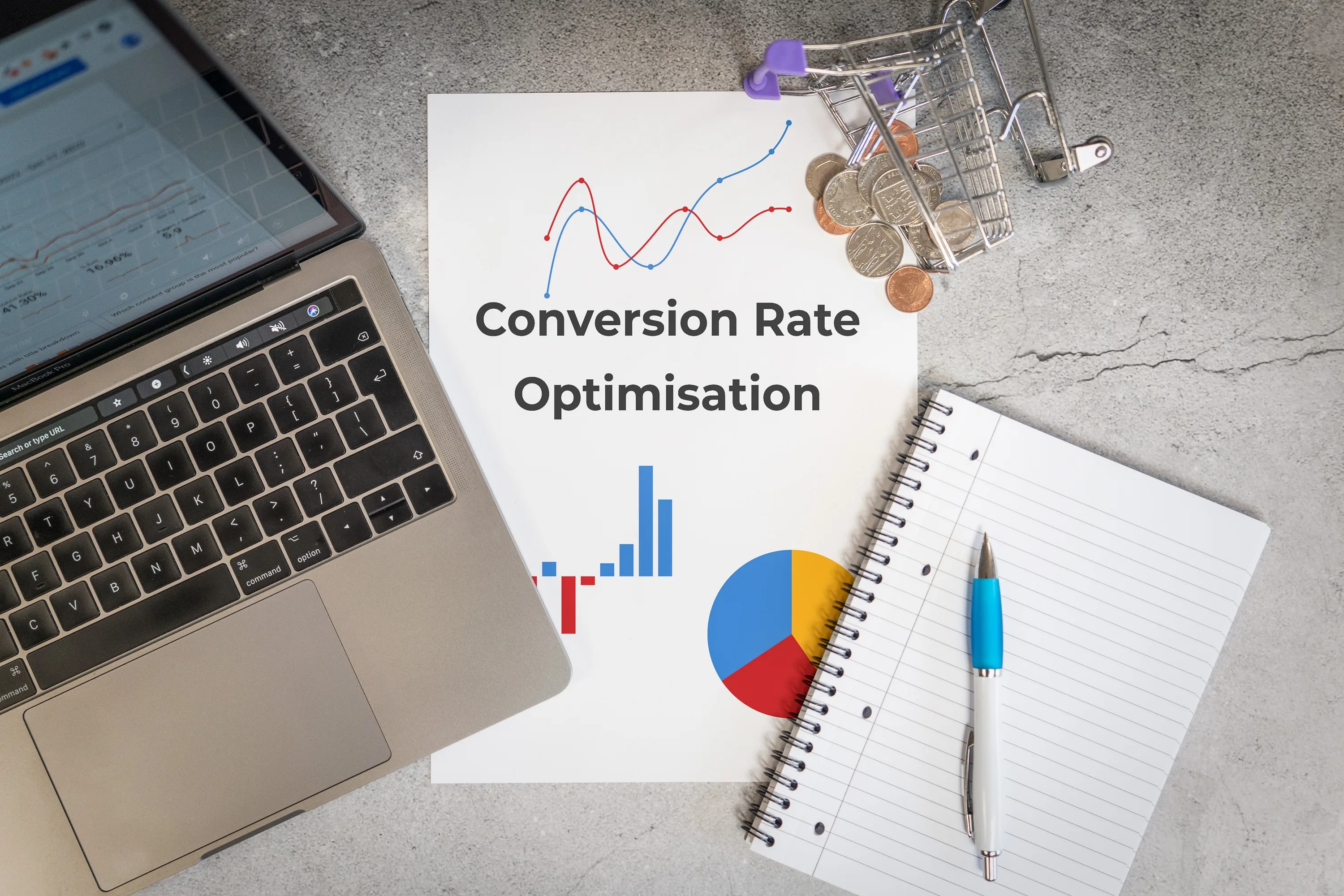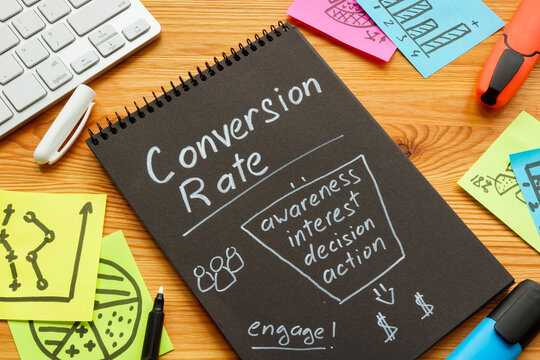6 Places and 8 Strategies to Improve Your Conversion Rate - Part 1

Today, most marketing teams are heavily focused on the basics of conversion rate optimization (CRO), and for good reason. Getting visitors to your website is only half the battle; you need to convert those visitors into leads, customers, and loyal followers.
That’s where conversion rate optimization comes in. It’s about fine-tuning your website and marketing efforts to make sure every interaction counts. By focusing on conversion rate optimization—enhancing content, split testing, and improving workflow—you can increase sales and provide a seamless, engaging experience for your audience. It’s about making sure every click gets you closer to your goals, while keeping your customers happy and coming back for more.
In this article, we’ll explain the power of conversion rate optimization, why your business should focus on conversion rate optimization, and how to get started.
What is conversion rate optimization?
Conversion rate optimization is the process of increasing the percentage of users or website visitors who complete a specific action to increase the number of leads you generate.
What is conversion rate?
Conversion rate is the percentage of visitors who complete a desired action, such as completing a web form, signing up for a service, or purchasing a product.
A high conversion rate means that your website is well-designed, well-formatted, and engaging to your target audience.
A low conversion rate can be the result of a variety of factors related to your website’s performance or design. Common causes of a poor conversion rate include slow loading, a broken form, or a website copy that doesn’t communicate your value proposition.
What is a good conversion rate?
A 2023 survey found that the average conversion rate across fourteen different industries was 2.9%. However, a good conversion rate depends on your industry, niche, goals, traffic, and core audience characteristics, among other factors.
The key is to understand your bottom line and work toward making incremental improvements toward your business goals. If your conversion rate is lower than you want, it’s time to improve.

How to Calculate Conversion Rates?
Conversion rates are calculated by dividing the number of conversions by the number of visitors and multiplying that number by 100 to get a percentage.
You can measure your conversions using marketing analytics tools equipped with conversion tracking capabilities that make this process clear and straightforward. By defining a custom conversion event, such as a form subscription or a product purchase, the tool can detect and track visitors who performed that specific action.
Let’s say you define a conversion as a newsletter subscription, and you have a subscription form on every page of your website.
In this case, you divide the total number of newsletter subscription requests by the total number of website visitors and multiply by 100.
So, if you had 500 subscription requests and 20,000 visitors in the last quarter, your conversion rate would be 2.5%.
You can repeat this process for every conversion opportunity on your site. All you have to do is make sure you only count visitors to the web pages where you have included the offer.
Alternatively, you can calculate the overall conversion rate for a website by dividing the total number of conversions for each conversion opportunity on your site by the total number of visitors to your site.
Conversion Rate Optimization and SEO
As mentioned earlier, conversion rate optimization focuses on improving the performance of your website to convert visitors into customers and boost conversions.
Search engine optimization (SEO) is the process of improving your website’s visibility on search engine results pages (SERPs) in order to boost sales and organic traffic.
While conversion rate optimization and SEO take different approaches, the ultimate goal is the same: increase sales.
Where can you implement a conversion rate optimization strategy?
Here are 6 places on your website to improve your conversion rate:
1. Homepage
Homepages are prime candidates for conversion rate optimization. In addition to making a first impression on visitors, the homepage is also a great opportunity to retain those visitors and introduce them to your website.
Some strategies for doing this include:
- Focus on links to product information.
- Include a free signup button.
- Add a chatbot that asks visitors questions.
Pro tip
A-B testing on homepages has consistently shown that value-based headlines and intuitive design improve user engagement and conversion rates.
Regularly test different headlines and images to see which combinations drive the most engagement and conversions.
2. Pricing page
A website’s pricing page can be a deciding factor for many visitors.
Conversion optimization helps a pricing page convert visitors into customers by comparing prices by term, such as annual vs. monthly, describing the product features associated with each price, adding a phone number for visitors to call for a quote, or adding a simple pop-up form.
Pro tip
Simplify pricing options and add social proof, such as testimonials or trust badges, to reduce anxiety around making a purchase decision.
Consider implementing a tiered pricing model with clear distinctions about the benefits of each tier. A-B test different pricing structures to find the sweet spot that maximizes conversions.
3. Blog
A blog is a huge conversion opportunity for a website. In addition to publishing thoughtful and useful content about your industry, a blog can use conversion rate optimization to convert readers into leads.
This process often involves adding a call to action (CTA) to the article or inviting readers to learn more about a topic by submitting their email address in exchange for an e-book or industry report.
Pro tip
Content marketing studies show that adding contextually relevant CTAs to blog posts significantly boosts your lead-generation efforts.
This could be a newsletter sign-up form, a downloadable resource, or a link to a relevant product or service page. Make sure your CTA is relevant to the topic of the article.

4. Call to Action Buttons
CTAs are the best place to improve your conversion rate, as they are the gateway to conversions. So, make sure they are prominent, visually distinctive, and clearly communicate the desired action from the user.
Pro tip
Make your CTA buttons stand out with contrasting colors and engaging, direct text that explains the benefit of clicking.
For example, instead of a “Sign Up” button, use a “Get a Free Quote Now” button. A-B testing different colors, sizes, and wording for your call-to-action buttons is essential to finding the best combination that converts.
5. Landing Page
Since a landing page is designed to get people to take action, it makes sense that it has the highest average conversion rate of all sign-up forms at 23%.
For example, a landing page for an event could be optimized with a video of last year’s event to encourage visitors to sign up this year.
A landing page offering a free resource could be optimized with preview content from that resource to encourage visitors to download it. Now that you know where you can improve conversions, you may be wondering when your company is ready to start the process.
Pro Tip
Keep your landing page free of distractions. Every landing page should have a clear goal, whether it’s collecting email addresses or selling a product. Minimize navigation options, use bullet points to quickly explain key information, and make sure your form or call-to-action is above the fold.
6. Forms
Whether it’s a sign-up form, contact form, or lead generation form, make your calls to action as user-friendly as possible.
Minimize the number of required fields, use clear labels, and provide immediate feedback that validates the data to make it easier for users to complete the form.
Pro tip
Limit the length of forms to only ask for the essential information. The fewer fields a user has to fill out, the higher the completion rate.
If you need more information, consider breaking the form into multiple steps or using conditional logic to show fields only when necessary. Adding a short version, such as explaining why certain information is needed, encourages the form to be filled out.
Conversion Rate Optimization Formulas
With conversion rate optimization, you can get the most out of your existing website traffic while ensuring you’re targeting qualified leads.
While the concept is simple, setting a conversion goal isn’t easy. It’s not enough to say, “This page converted 50 people this month, so we want to convert 100 people next month.” You don’t just want 50 more conversions from a web page; you want 50 more conversions from every certain number of people who visit it.
(That’s your conversion rate: the percentage of people who convert to customers on your website based on the number of people who visit it.)
To get a better understanding of your conversion rate at any given time, here are three common formulas you can use to understand, analyze, and improve your conversion rate.
1. Calculating Conversion Rate: Conversion Rate
Calculating your conversion rate is as simple as dividing the number of conversions (or leads) by the number of visitors and then multiplying that number by 100 to get the percentage.
2. Calculating Conversion Rate: Number of Net New Customers
To calculate your net new customer, divide your net revenue goal by your average sales price.
3. Calculating Conversion Rate: Lead Goal
Finally, to calculate your lead goal, divide your number of new customers by your lead conversion rate, which is calculated by dividing your total number of leads by your total number of customers, then calculate the percentage.
Here’s an example of these formulas:
If your website has 10,000 monthly visitors, generating 100 leads, and therefore 10 customers each month, your conversion rate from visitor to lead would be 1%. What if you wanted to attract 20 customers each month?
You can try to attract 20,000 visitors to your website without losing traffic, although this is a risk you should avoid.
Alternatively, you can get more leads from existing traffic by improving your conversion rate. This is less risky and is likely to result in better results for your bottom line.
For example, if you increase your conversion rate from 1% to 2%, you will double your leads and customers. The following list of 3 companies (A, B, and C) is proof of this, as you can see the positive impact that increasing your website’s conversion rate has:
- Monthly visits
- 10,0000
- 10,000
- 10,000
- Conversion rate
- 1%
- 2%
- 3%
- Leads generated
- 100
- 200
- 300
- New customers
- 10
- 20
- 30
See the vast increases in leads and net new customers when you boost your conversion rate. Not only that, but it’s clear that generating more website traffic isn’t necessarily the right approach when trying to improve your conversion rate.
In fact, this table shows you that you can grow your business significantly without increasing your traffic at all.
Now that you understand the basics of conversion rate optimization, you’re ready to take the first steps toward improving your company’s conversion rate. We’ll outline some strategies below so you can start experimenting.
In conclusion
In this part of the article, we’ve talked about 6 places to improve your conversion rate, and in the second part, we’ll talk about 8 strategies to improve your conversion rate